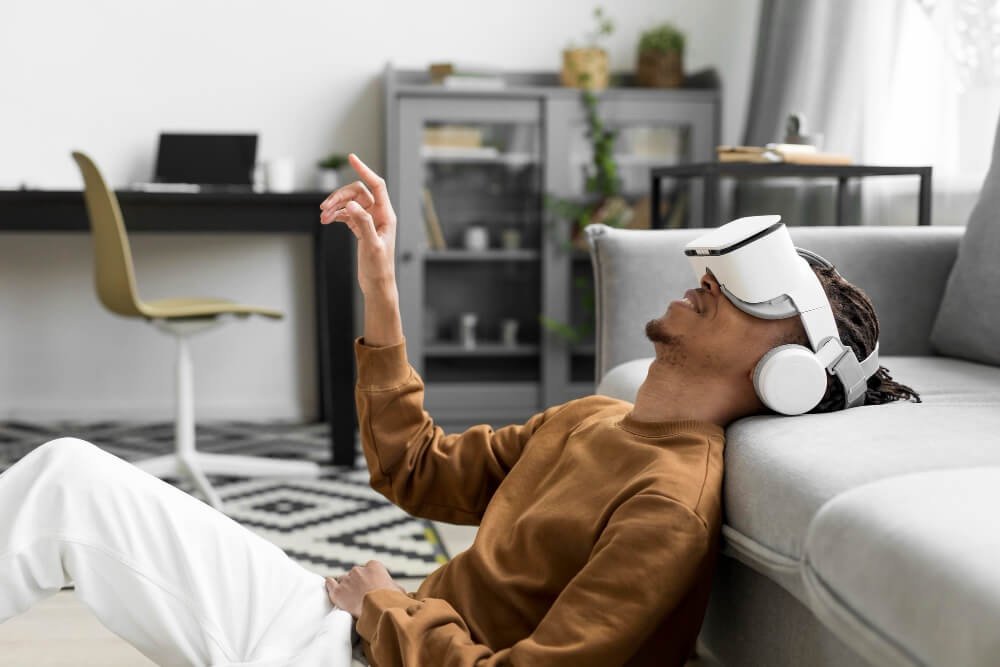The convergence of Augmented Reality (AR) and Virtual Reality (VR) for online shopping is set to transform the retail industry. Both these immersive technologies offer an experience that bridges digital convenience of online shopping and the sensory satisfaction of in-store shopping. This article explains how AR and VR are revolutionizing online shopping, focusing on their benefits, real-world applications, and the future potential of these technologies.
The Emergence of AR & VR in E-commerce
AR and VR technologies are gaining traction very quickly in the e-commerce sector. AR enhances customers’ shopping experience by overlaying virtual information over reality, allowing buyers to view a product in its own environment. For instance, AR can show what a piece of furniture would look like in a living room, or how sunglasses would look on a face. VR on the other hand, does this better by placing users into a virtual environment, which means they are inside a virtual space where they are able to interact with products just as if they were physically present at a store. This may include virtual stores through which one may walk, check out the various products, and even communicate with virtual sales persons.
Amazon’s AR View feature is a great example that allows customers to see how various products will look in their homes using their smartphones. This feature enhances the decision-making process of customers by providing them with a better perspective of the product in their actual environment.
Benefits of AR & VR in Online Shopping
Enhanced Customer Engagement: AR and VR technologies offer interactive and immersive shopping experiences that captivate the customer. By offering a more immersive and interactive experience, these technologies enhance the enjoyment and memorability of the shopping experience. Customers are more likely to be inclined to spend time browsing products and services, leading to enhanced engagement and brand loyalty.
Minimized Return Rates: One of the largest problems with online shopping is the significant percentage of returns as a result of mismatched expectations. AR and VR address this issue by allowing consumers to visualize goods in their real environment before a purchase is made. For example, a consumer can use AR to figure out how a piece of furniture would fit in their living room or virtually try clothing through VR. This leads to more informed purchasing and minimizes the return rate.
Personalized shopping experiences: AR and VR technologies enable retailers to give personalized shopping experiences that are tailored to the liking of individual customers. Virtual fitting rooms can, for instance, recommend types and sizes of clothes based on the customer’s measurements and fashion sense. Personalization of such a nature enhances customer happiness and improves relationships between customers and brands.
Increased Sales: AR and VR technologies create immersive experiences that lead to higher conversion rates. When customers can interact with products in a more meaningful way, they are more confident about their purchases. This increased confidence leads to higher sales and revenues for retailers.
According to a Gartner study, by 2025, 50% of online stores will utilize AR and VR technologies to enhance sales and customer experience.

Challenges and Considerations
While there are numerous advantages of AR and VR, challenges also exist and must be considered. It requires a lot of money to develop and deploy the technologies, and ensuring a seamless user experience with them requires a robust infrastructure as well as technical expertise. There also exist privacy-related concerns related to data collection and usage in the context of AR and VR apps.
AR and VR are posed to revolutionize the way e-commerce is undertaken through immersive, interactive, and personalized experiences. With these technologies being used increasingly, businesses embracing them will gain a competitive edge, leading to enhanced customer satisfaction and increased earnings. The future of e-commerce is already here, and it is augmented and virtual.






You must be logged in to post a comment.